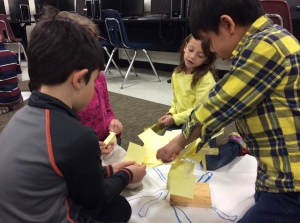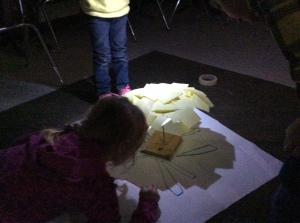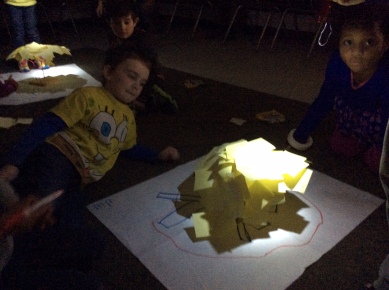Thanks to a grant from VEEP, I have been given an array of STEM-related lesson plans and resources for elementary school students. Using these plans, I will be working with our first graders to explore the concepts of light, heat, and energy. 
First graders at Flynn are working (just like scientists!) to test materials for their reactions to light. They have been keeping data and holding “science meetings” to discuss their results. I was so impressed by their comments about how to reach consensus with data. In every class I had a student suggest retesting–what innate understanding about the nature of investigations!
 Students were then asked to track shadow and light around winter and summer tree models and compare the differences. Students were engaged and took turns with “jobs” around this investigation.
Students were then asked to track shadow and light around winter and summer tree models and compare the differences. Students were engaged and took turns with “jobs” around this investigation.
NGSS’ new pedagogy of scientific learning is to encourage teachers to create a “Knowledge Building Culture” by having students “figure out” rather than “learning about”. These lessons are written with this goal in mind. Students engaged in investigations, used models, constructed explanations about light, sun and shade and communicated information. After the lesson, I asked students to tell me what they had figured out about light.
This is what they told me:
Light is bright, but does not go through all material.
The sun gives the Earth heat.
Some things like aluminum foil or the slide on the playground won’t let light go through it.
Shade is cooler because it is blocking the heat.
The sun is made of hot gas.
The sun is a star.
Trees can keep you cool.
I think they figured it out –
COOL WAY TO LEARN!😎
LikeLike